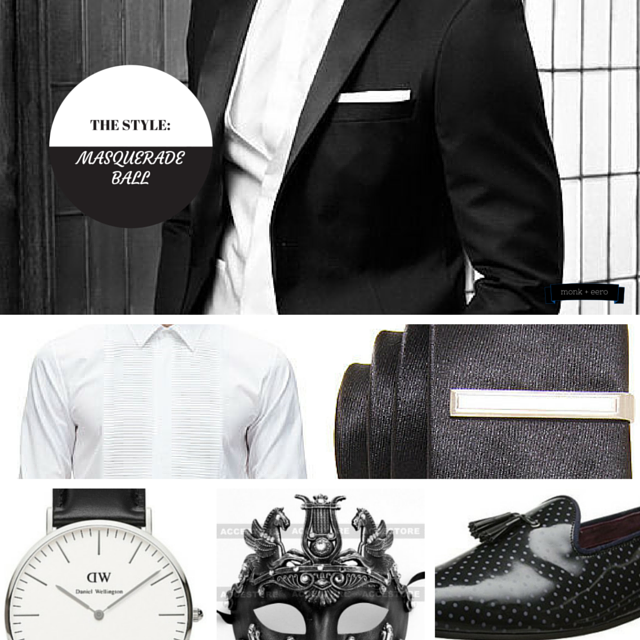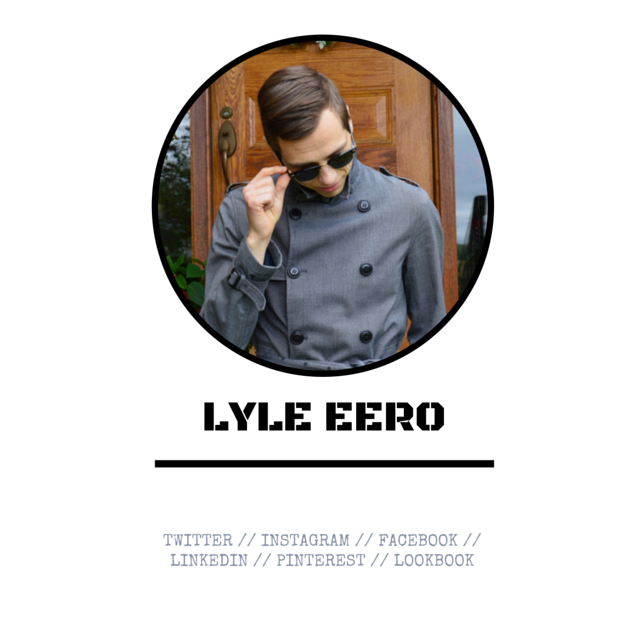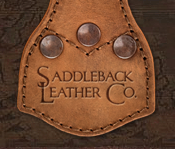Decadent, luxuriously stylish, mysteriously intriguing, and captivatingly charming!
Gents, I give you the (black-tie) masquerade ball.
All-hallows-eve and the discerningly stylish gentleman…certainly not a match made in sartorial heaven by any means. And yet, if one were to delve far enough back into the annals of history they would find that — despite Halloween being a modern celebration wrought in kitschy (but amusing) cheap costumery — there are indeed examples of this most dark of holidays being celebrated with refined panache and ornate style.
And the most sartorially flattering of them all…the worldly renowned masquerade ball.
Nevertheless, what truly is the telling testament to its lasting legacy is its enduring appeal outside of its sinful past — its chameleon-like ability to successfully adapt to each passing generations (and adoptive nations) stylish proclivities and culturally definitive mores. A draw so strong that, in spite of its modern revisionist form — an exclusive formal event — being nothing alike its pre-cursing forebears, no longer alluding to none of its illicit characteristics, that it has still managed to keep its traditional spirit alive (in celebratory essence) whilst likewise continuously adapting to the cultural whims and fashions that have come and gone with time.
But as history would have it, the first masquerade balls were a far cry from the dapper (and moral) modern manifestations that we have come to identify with today. For centuries the little that they had to offer in regards to positive virtue was incessantly overshadowed by the seedy activities that were fashioned out of its creative blossoming. I speak of the immoral attributes that became synonymously ingrained with the festivities themselves, those in which can be held accountable for the vast array of the most unscrupulous of superlatives that came to define the explicit nature of the bygone historic masquerade:
Indulgent gluttony, sinful intrigue, lustful pursuit, uninhibited debauchery…even murder.
|
THE MUSIC
|
Well, that would naturally be the work of the famous masquerade mask!
It was the enabling force behind these — most unbecoming — characteristic associations, with the anonymity (its cloak of disguise and promise of privacy) being the basis from which the freedom to indulge in the repressed desires of ones lesser being and its (often lustful) carnal inhibitions came to fruition.
Stricken by the notion that ones identity was protected (his actions thusly covert) — and he therefore not responsible or beheld to any social mores — these events became irresistible to all: royalty, the aristocracy, and the peasantry alike, spreading across Europe (then the America’s) like wildfire.
And yet, the one positive virtue that has held steadfast throughout all the trials-and-tribulations of the masquerade balls storied history is that they have been infallible throughout their existence in pleasing the eye, in being eternally stylish and fittingly suitable to the times.
Influentially, they have had resounding effects on all facets of life, from fashion — often acting as the prominent venues used to display (thus reflecting) the trends of any given era that they graced— to modern day pop-culture (your favourite superheroes masks didn't magically appear out of nowhere).
And it is to that tune that I endeavoured to providing you with a little modern style inspiration (for those planning to attend a black-tie masquerade ball come Halloween) alongside a touch of sartorial history behind this most becoming of gentlemanly Halloween affairs…
A masquerade ball — or La bal masqué — is simply an extravagantly refined evening dance affair that is accentuated by lavish cuisine and often some sort of identity guessing game from which participants/guests are tasked with attending disguised in an opulent mask and formal costumery. The conceptualized ideal is that the mask alone affords one complete anonymity for the evening, allowing them to act freely and do as they see fit without ill consequence or the fear of personal slander.
Fashionably linked to Renaissance Italy — but originating in the Royale Court of King Charles VI in 12th century France — masquerades were first associated with all-inclusive (peasants, aristocracy, and royalty alike) carnival-esque festivities, but were later (restrictively) adopted by nearly every late Royal medieval dynasty to commemorate and mark important events — royal declarations/treaties, weddings, or even crowning ceremonies.
First gaining notable notoriety in Venice, these festive soirees were crafted to — for one evening alone — side-step the social mores of the times, to provide a platform for those commonly governed by strict etiquette and gentlemanly behaviour to act out of character, to indulge upon what was frequently denied or withheld from them. Which, as it were, just so happened to be the uninhibited gluttony of all things in life: from over-indulgent dining, to sinful lust, too drunken debauchery and often criminality.
Bewitching as those enticements are to many, it should be of little surprise that these parties quickly became irresistible to those with weak wills and questionable morals, spreading to all corners of the world with the universally transitive promise of a truly scandalous night of consequence free revelry being too powerful to dispel for the general masses.
It was a seduction of sorts that managed to ingratiate itself with all the most influential royal courts of Europe, surfacing with the French (12th century) and permeating over time to the Venetians (16th century) and finally England (18th century) before sauntering across the Atlantic into North America and beyond.
And every time the dust seemed to settle, with the draw seemingly waning, the popularity of these balls once again began to ebb-and-flow with a consistently that afforded it its celebrated resonance to this very day.
Born out of a period of unrivalled creativity and expressive innovation, a time when the entire world was enamoured with the human physique and its natural beauty, these balls grew into being the crowning modern cultural venues for one to stylishly express his refined nature to the world; being contemporarily posh, primp, and devoid of any historically denoted repulsive debauchery nor modern day Halloween costumed tackiness.
Having rightfully earned the positive rebranding, masquerade balls are now highly respectable parties that are stylishly unsurpassed — year round — by any other festive holiday event.
And it is to that account that they have become prominently black-tie formal soirees (most often by invitation only), being stylishly revised to near perfection like a finely aged and cultured wine. They are still traditionally elaborate evenings of music, dance, and culture, but with a few contemporary addendum’s, with the most prominent changes being that they are often charitably driven AND festive in celebration as well as virtuously governed by a strict etiquette and proper decorum (a clear divergence from its odious past).
From the bygone royal dynasties of its storied antiquity to the classical Shakespearian odes and cinematic inspirations that reference it presently, the masquerade ball and its definitive style, universal intrigue, and enchanting enticements have always had a considerably bewitching hold upon our cultural — and sartorial — psyches.
From a strictly fashionable perspective, the masquerade ball has — in one form or another — had a stylish pedigree that has persisted for centuries, with the ensembles of its participants most often reflecting what was chic and in vogue at any given point in the last 500 or so years of history.
And in seeing as it has the extraordinary ability to bring out the style voyeur (or inner exhibitionist) of all who attend, it comes at no surprise that when discussing its modern framework, the synonymous black-tie soiree, that its stylish laurels have been arguably exceeded, surpassing in formal refinement every incarnation that has proceeded it.
In that vein, it can be debated upon that it is in fact the quintessential celebratory (holiday) occasion for the discerningly stylish gentleman of the times — bar none.
It’s a sartorialists dream event, with bespoke tuxedos and suiting, polished footwear, refined accoutrements, and genteel sensibilities abound.
As such, and in regards to wardrobing requirements, it could not be more straightforward.
Traditionally speaking, the mask will be eternally nonnegotiable.
Modernly, the tuxedo (or its counterpart, the perfectly tailored black suit).
|
SPORT IT WELL: Skip the jacket with tails by opting instead for a modernly elegant and tailored (nipped at the waist; soft shoulders) dark midnight blue single-breasted shawl-collared tux jacket with contrasting black velvet lapels and slit pockets. Aim for one with a shorter cut and team it with the matching suit trousers — no pleats and properly tapered — and you will have the foundation of the look sorted out.
Add a subtle ode to the past with a white slim-fitted wing collared (french-cuffed) tuxedo shirt, a classic dark blue velvet bow-tie (for some added texture), a simple white silk pocket square, and a timeless (minimalist) black leather-banded dress watch. Finish off the look with either a pair of plush and dandy velvet smoking dress slippers (for some added pop and sophistication) or a more traditional pair of polished (shined) black tasseled tuxedo loafers accompanied by some solid black or blue socks (silk, possibly ribbed) . Accessories wise, it would serve you well to adopt a set of requisitecufflinks, a formal silk scarf (solid white or black polka-dot), and a decorative walking cane (if you are ever so bold) — all of which will really bring the look full circle, paying proper homage to both the occasion and it’s storied formality. Aside from that, and lest I forget the most important facet of all, an opulently decorated tonally appropriate masquerade mask in a complimentary colour, such as gold/black. Or — and to celebrate Halloween itself in proper fashion — an animal-themed mask such as that of the fox in which I have seamlessly styled into the ensemble for that added (trick-or-treat) festive touch. After that, well I will leave you to your own devices to handle the rest of the evening come the striking of midnight and your unmasking… |
No superheroes, idolized movie characters, or any other pop-culture inspired costumes for that matter, just formally charming suiting that works to define the occasion while also making it refreshingly unique in direct comparison to the rest of the casual fair commonly offered up come Halloween party season.
Tails, tuxedos, refined suiting, dinner jackets, they are all options on a gents Halloween masquerade ball style platter. What one chooses is of his own volition, but just remember to dress to the exact specifications outlined for the occasion — black-tie and simply nothing else.
|
The most vital component of the ensemble: the mask.
It is absolute, completely nonnegotiable. While less extravagant then that of its female counterpart, men’s masquerade masks are nevertheless still undoubtably opulent and should be carefully chosen by taking into account both ones personality and his stylish proclivities (i.e. comfort level). Often devoid of the plumage associated with women's masks, the gentleman’s masquerade mask comes in everything from animal-skins to half-canvassed (Phantom of the Opera) monstrosities. Yet, what I would recommend is a classically adorned half-mask (Venetian style with a Verona shape) that is embedded with some sort of subtle character building embroidery and finished in either gold or black (or dark navy blue) for that timeless yet modernly genteel aesthetic. Beyond that, the choices are but of a personally discerning nature. Do you fancy one with a silk-ribboned tie band? Or do you simply sport one affixed with a complimentary stick for holding pleasure? Half-masked or full canvased? Character-inspired or of an animal nature? Whatever the case may be, they do come in a dizzying array of thematic styles and colour schemes: plain solids, artistacally laced metallics, elongated beaks (which were worn by physicians back in renaissance Italy to denote their professional status), and even jester-inspired models, to name but a few. Decoratively speaking, many can be found embedded with crystals, diamonds, acrylic paints or even golds/silvers, and often have perforations, slits, or contrasting interlaced mosaics that speak to specific characters from literary fiction. Are you musically inclined? Choose a harlequin Venetian mask with its musical wallpapering. Want something voracious and uncommon? How about an animal mask. Or are you a traditionalist? Try one that is solid gold or black and featuring a unique design — such as a roman gladiator's. The only matter I would advise taking special consideration upon is that of keeping your selection uncomplicated (ie. no plumage) and personally befitting in nature. That is of course unless you want to pay proper homage to Halloween by opting for a resplendently decorative animal (like the fox I featured above) or character-specific mask (say The Phantom of the Opera). Either way, ones choice of mask comes down to a simple matter of personal preference — it’s assuringly difficult to run stylishly afoul aside from the quality (construction) of the mask. |
And while some may have you believe that it has slipped into being something of a cultural novelty and nothing more, they would be strongly mistaken.
Why?
Because masquerade balls are not only culturally fulfilling but also a sartorialists dream outing.
On purely stylish terms, they are THE consummate Halloween parties for the astutely stylish modern gent to haunt. He who is not satisfied with — nor will be caught dead in — a kitschy modern day pop-culture costume. For the gent who is set upon properly celebrating the occasion (and the holiday), but in a more debonair and tactfully sophisticated way.
The formal (black-tie) masquerade ball embodies his very desires and demands, irrespective of its cultural connotations, be they for pure Halloween revelry or to aid charitable organizations.
And so it is to him, Halloween, and the masquerade balls stylish pedigree and storied tradition that I shall toast.
For it is indeed high time you dusted off your waltzing skills and set it upon yourself to dressing to kill — with your sharply tailored suiting that is — in order to enjoy an unparalleled evening of dancing, fine dining, and (responsible) carousing in sartorial bliss.
So here’s to traditionally celebrating Halloween with ease, comfort, and stylish refinement.
All that now awaits you is the iconic ballroom, demanding your presence, calling out your name…
The question is: Will you answer?
~ Lyle Eero ~
How do you prefer to celebrate Halloween? Are you a practitioner of childhood nostalgia or a modern sartorialist? And have you ever attended a masquerade ball? Feel free to share the experience if you have.
Enjoyed your read? You may just like these as well:












 RSS Feed
RSS Feed













